18 November 2019
On a dreary Monday in November, after my short contract working on a project in a large Dutch museum had ended, we set off to the airport to board a small plane to Cairo. This time with the intention to stay in Luxor for a month, in order to write, draw, work, reflect and do some slow-paced sightseeing. We being my mother and I, as a modern day Henriëtte and Alexandrine Tinne, but with a lot less cash.
After a swift takeoff the plane burst through the clouds, from which moment on the sun would be our constant companion. At Cairo Airport we were welcomed by clean toilets (toilet paper, soap, hand towels, the works) and a printed invoice upon purchasing our visa (!). With the smallest possible plane in the EgyptAir fleet we continued to Luxor, among holiday making Spaniards and Italians.
Upon arrival in Luxor Ashraf greeted us, who drove us to our apartment where the sleepy owner let us in. Here we were, in the middle of the night, on an adventure with no clear goal, wondering what we were going to do in Luxor for a month. We fell asleep to the sound of barking dogs…
19 November
…only to be woken a couple of hours later by the sound of farm animals and the muezzin’s amplified call to prayer. In the morning we sat on the balcony with a lovely view of the fields, houses and rocky escarpment in the distance. Hot air balloons dotted the sky while birds flew around. I had slept for just two hours and my recurring thought was what it was an Egyptian rooster said. A Dutch rooster says ‘kukeleku’ and an English one ‘cock-a-doodle-doo’, so an Egyptian rooster must evidently speak Arabic. It reminded me of the donkey, which in ancient Egyptian is called ‘aA’ (short vowel, glottal stop, long vowel), reflecting the onomatopoeic sound of its braying.
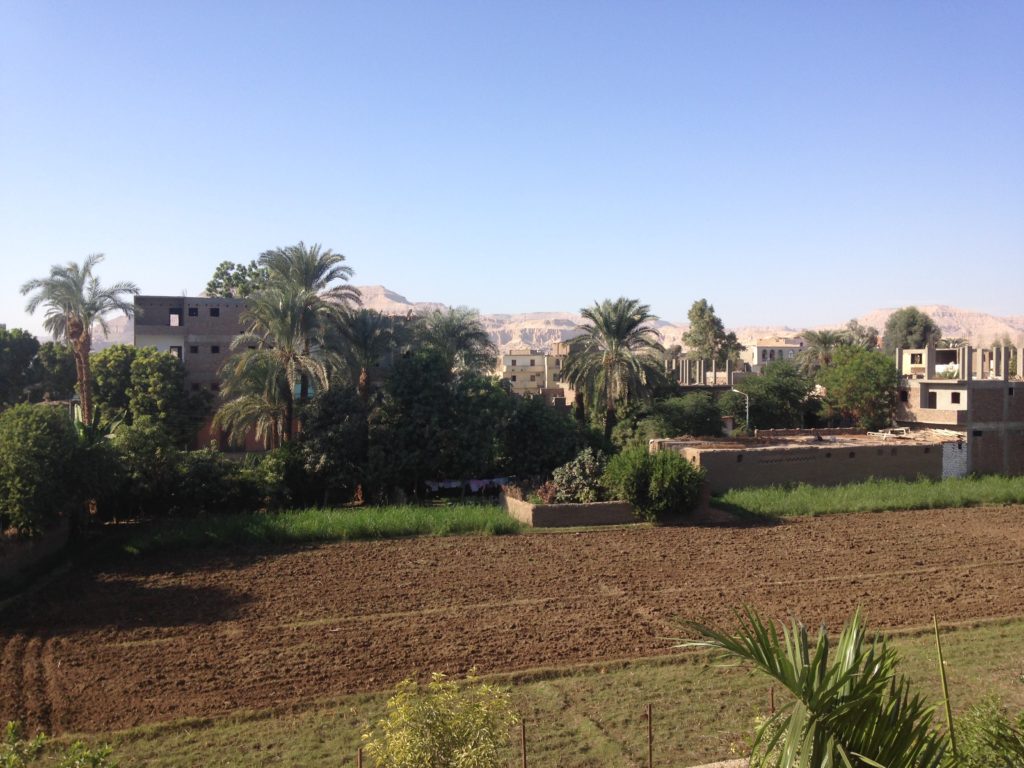
A balcony with a view
On this first day we strolled to the local bakery (Atta’s), exchanged money at the newly opened west bank branch of the bank (very official, with an invoice again), and did some groceries. After a siesta we went to the Nile Valley Hotel for a swim and a hamburger on the roof terrace, where we instantly met a nice fellow holidaymaker as well as an Egyptologist and his wife. Ali brought us back to the apartment in his tuktuk, showing us his wedding pictures while continuing his brisk driving.
20 November
The next day found us again on the balcony, where we studied the local school. Class starts by singing the national anthem (Bilady, Bilady, Bilady…), continued by shouting of the alphabet at the top of one’s voice, alternated with hanging out of the windows to wave at funny foreigners on balconies. A neighbouring lady was hanging her laundry to dry while a farmer was working his land with the help of an ancient looking hoe, assisted by his little boy. There were cows, goats, egrets and the occasional donkey to observe.
I tried to work, but internet was out of order. So instead we drank coffee, did some yoga and headed off to the east bank with the local ferry for a spot of lunch and a book at Aboudi. After a visit to Gaddis (another bookstore) we went back with the ferry, then a swim, juice and shorba ads (lentil soup) on the roof terrace followed by a tuktuk back home.
It really is starting to feel like home.

The square in front of Luxor Temple, where the pavement was being scrubbed
before new greenery was planted
21 November
The field is being plowed while an occasional hoopoe lands on the furrows.
I spent the morning working, then having ice cream by the pool, followed by an attempt to cook pasta. Cooking is done on an old fashioned gas stove and the mozzarella we could buy is of a somewhat odd texture. We can watch Dutch television on my laptop when the internet connection is strong enough. Evening falls swiftly in Egypt and there is not a great deal of nightlife on the west bank. We read and read. I usually wake up at 5 in the morning with the call to prayer and then read on my phone. Olaf de Landell’s family saga The Porcelain Tree set in the fifties somehow goes well with the environment.
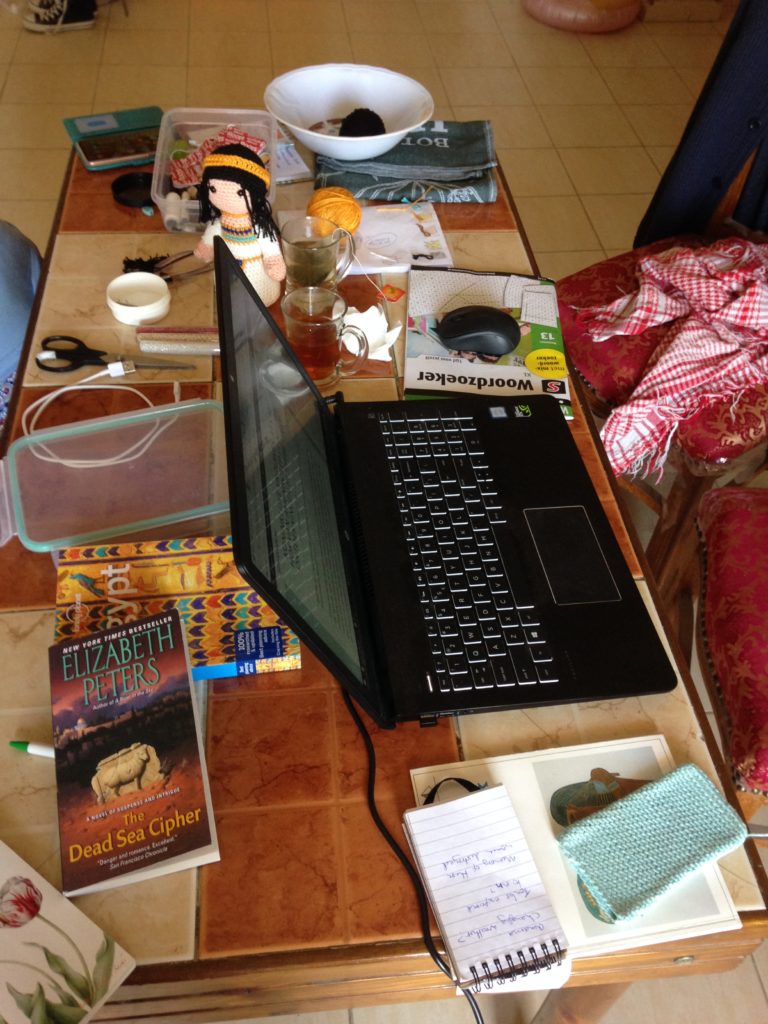
‘The office’
22 November
The plowed field is being irrigated by father and son.
Today we visited the accessible tombs at Deir el-Medina. Evaded the amorous intentions of a well meaning archaeologist by fervently photographing with my new camera. It’s also suitable for video but I didn’t bring a tripod. Lunched copiously at Marsam. Swam and ate on the rooftop. Tired.
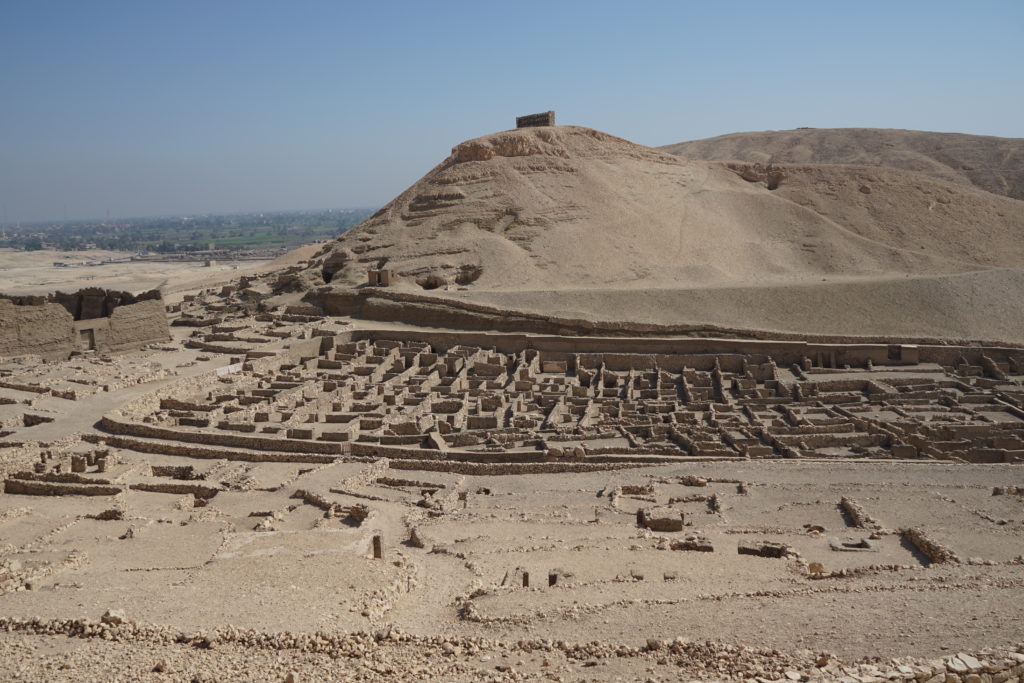
Deir el-Medina
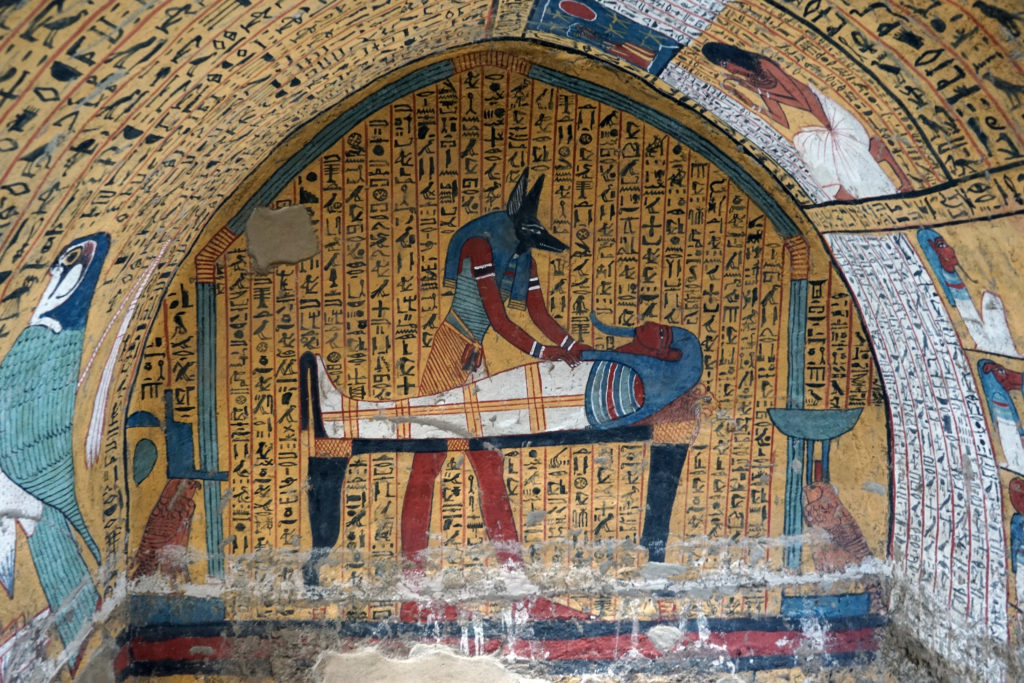
In the tomb of Amennakht (TT 218)
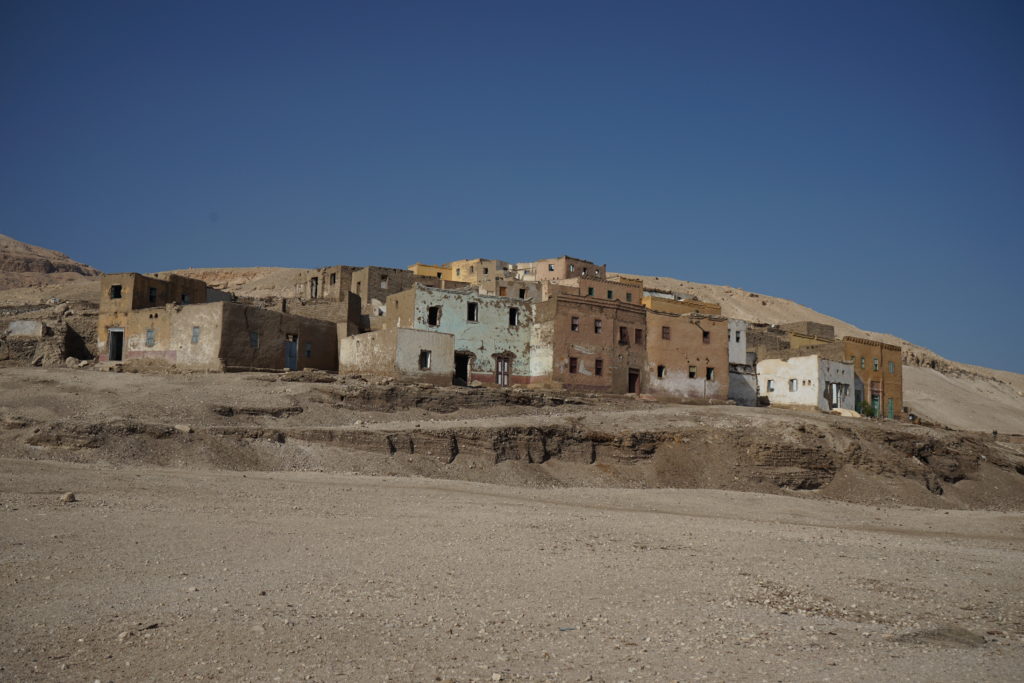
Old Qurna
23 November
Took a motor boat out to Karnak. Leisurely explored the temple grounds, including the quiet open air museum with the lovely Red Chapel of Hatshepsut, White Chapel of Senwosret I and Alabaster Chapel of Amenhotep I. The splendid bark shrine of Hatshepsut contains scenes of her performing rites as a king next to her stepson Tuthmose III.
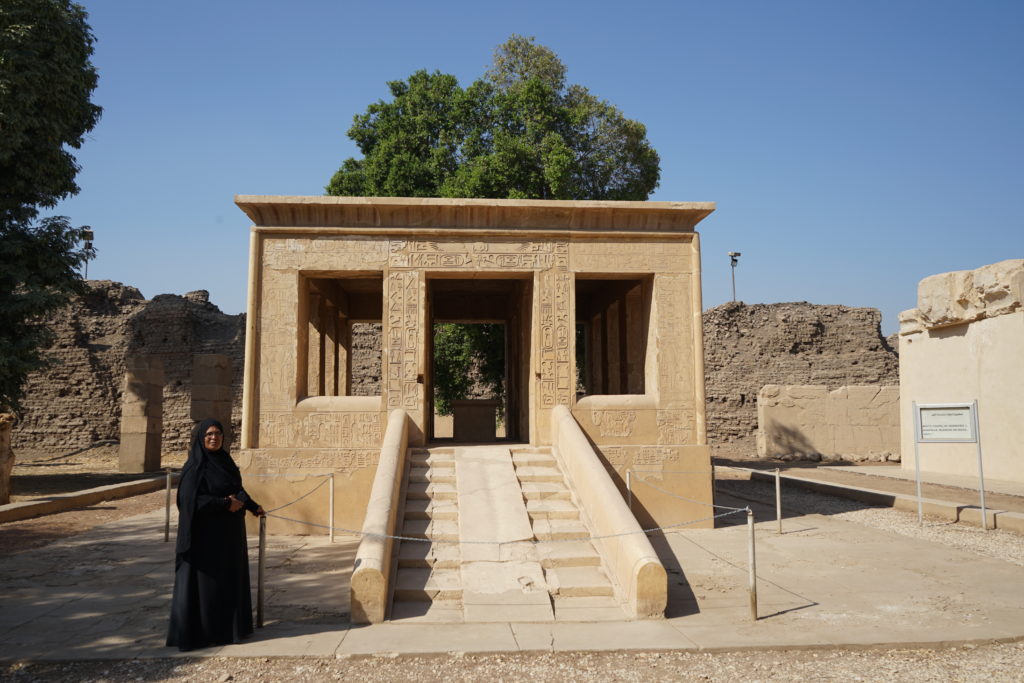
The White Chapel of Senwosret I
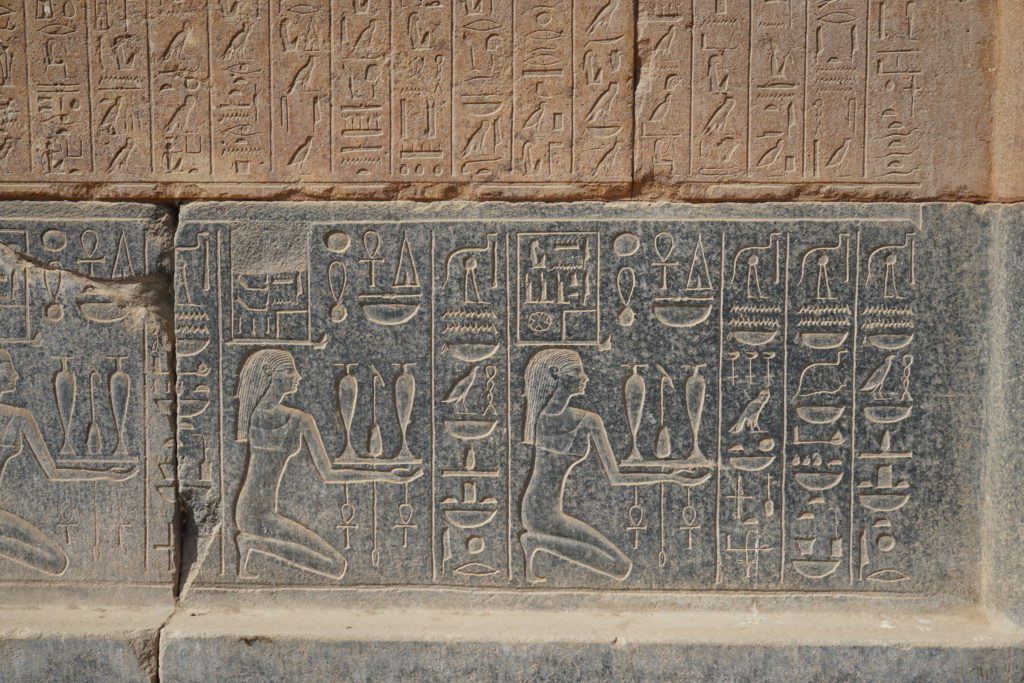
Personified estates bringing offerings on the Red Chapel of Hatshepsut
Wandering around Karnak made me realize I should put up a decent map of the site on my website egyptologie.nu, for interested travelers to print and bring with them.
We viewed the small temple of Ptah with the locked away statue of Sakhmet, the temple of Khonsu built by Ramesses III (which is like a miniature Medinet Habu) and the Opet temple. We swam and ate at the Nile Valley Hotel, and then followed a lecture by archaeologist Piers Litherland at the Mummification Museum.
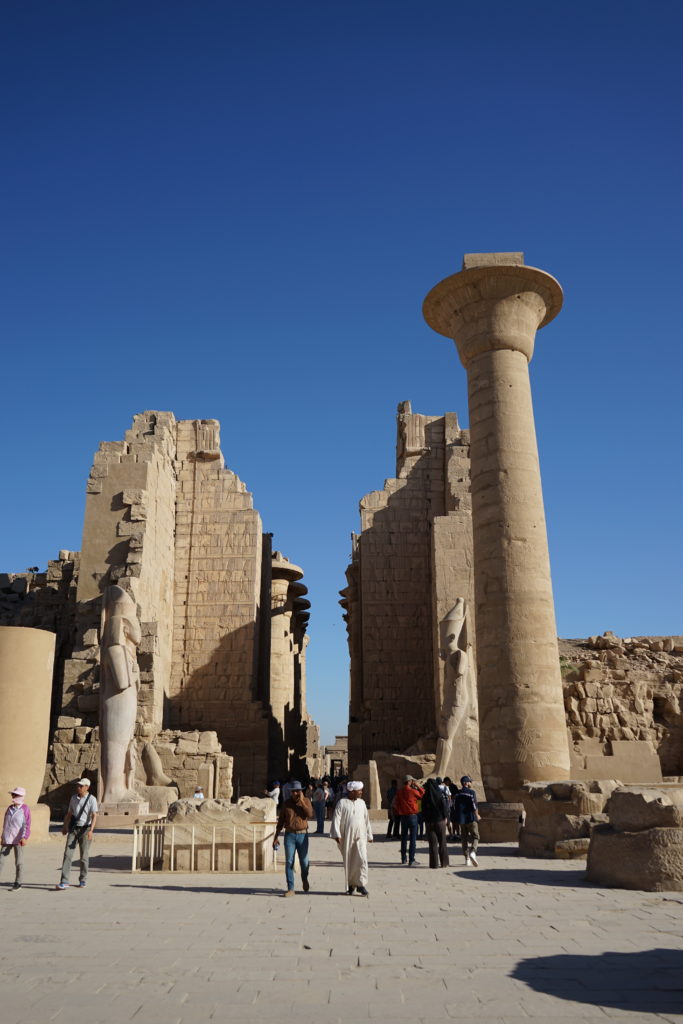
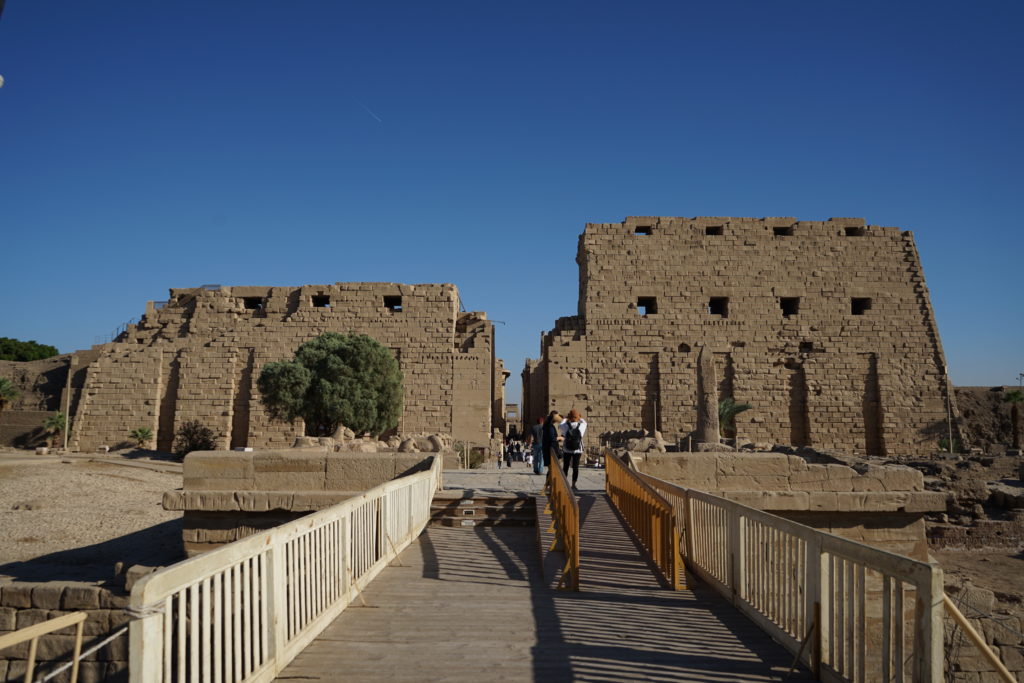
Splendid Karnak
24 November
On this day we bought train tickets for our trip to Aswan. After some shopping at a household store (where they sold genuine Dutch ‘huishouddoekjes’) and the neighbouring super market, we enjoyed a signature strawberry juice and panino at Aboudi, before running into yet another Egyptologist who was guiding a tour group. Did some laundry.
25 November
Wrote a blog, baked pancakes and took a stroll to the Luxor Art Gallery and a little art market at the Gezira Gardens Hotel. Stumbled across a dainty little shop (Bespoke) with desirable pillows, lamps and accessories. Packed for Aswan.
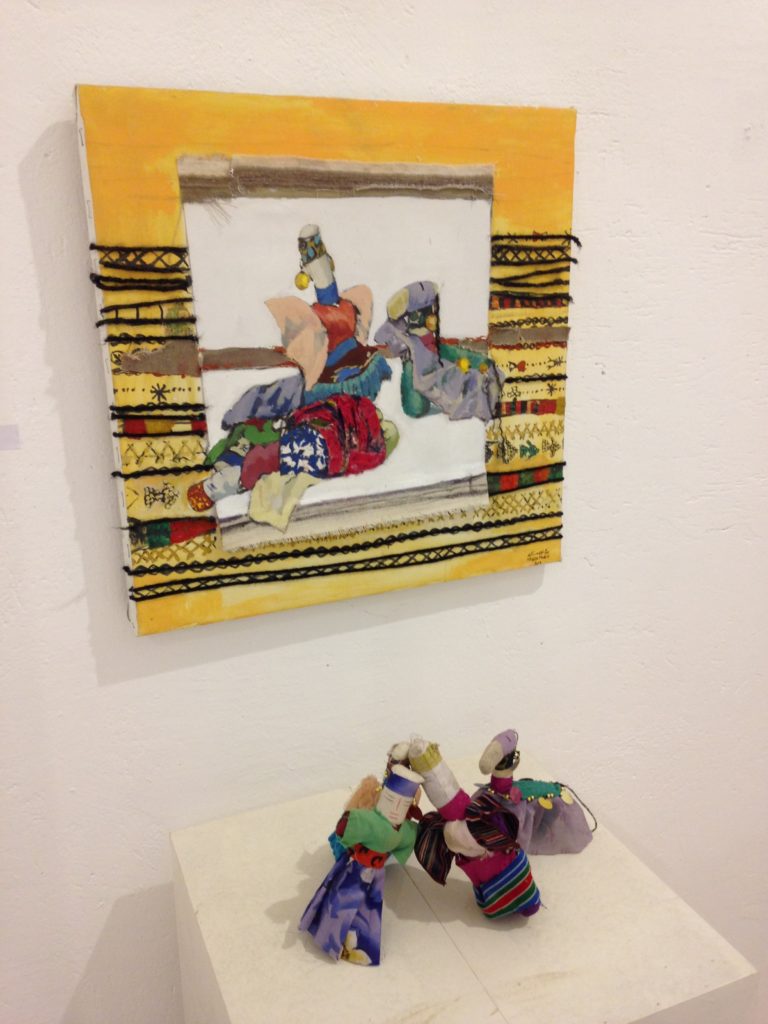
At Luxor Art Gallery
26 November
Arrived early at the Luxor train station. Waited a significant time before trains started coming in. Some were of the local ramshackle variety but other, more sturdy looking trains repeatedly proved not to be the one we had bought tickets for. After some deliberation by a friendly conductor we (being inevitably a bunch of tourists) were sat in an empty wagon with more or less functioning aircon. It turned out that the first train on the route was heavily delayed, and so were all subsequent trains. Either way, we were on our way to Aswan. As endless desert slid past us interspersed with dusty towns, we could occasionally catch a glimpse of the Nile. There was tea to be had, and we had packed our own lunch.
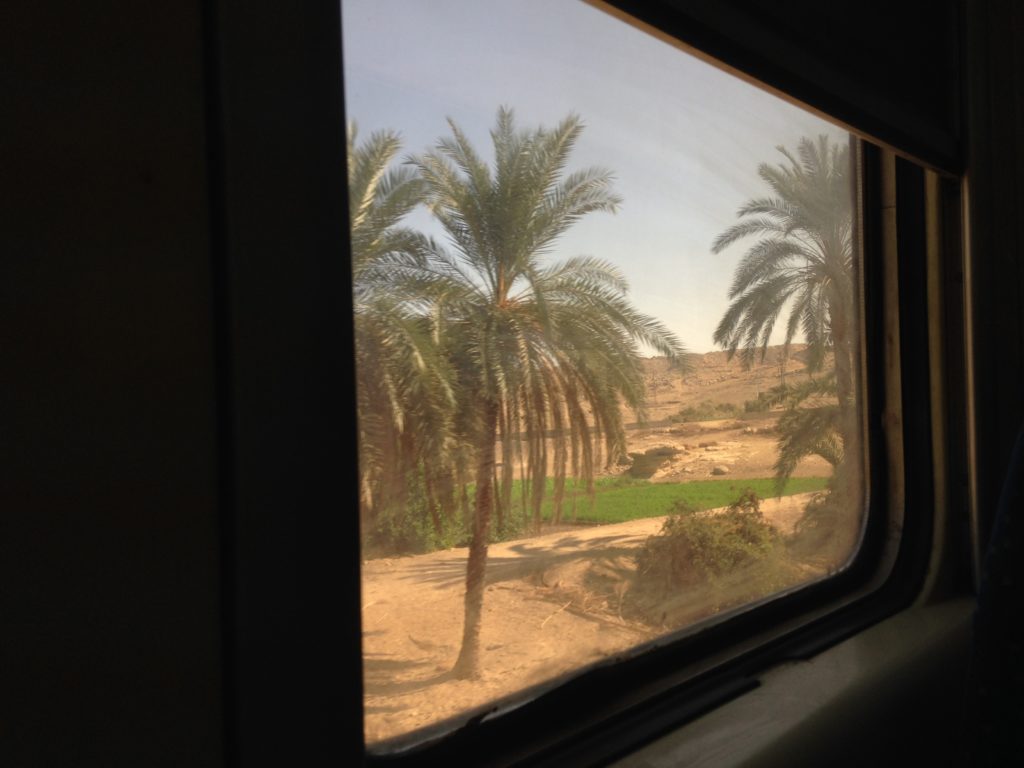
On the train to Aswan
Arriving in Aswan, even this late in the year, means entering an oven. The heat is thick and the sun glaring. It’s a different world, the far south, where Africa begins. We only had to walk straight to the bank of the Nile, where the local ferry transported us once again to the west bank. There is something special about the west bank. It is where the ancient Egyptians buried their dead, often in tombs cut from the bedrock. Where the funerary procession crossed the Nile to in a wooden boat held together by rope stitching, and where offerings were brought during the many feast days. But undoubtedly people also lived on the west bank, as they did again now in a quiet Nubian village.
West banks are also curiously missing in street names, but we were told to ‘look for the blue house’. We soon entered a lush little garden attached to a modest guesthouse, every aspect of which was blue. After waking the owner Abdel from his midday slumbers, this most relaxed of all men installed us on the roof terrace, provided us with fruit and drinks, and went to work in the kitchen while telling us his story to the soft tunes of Nubian music.
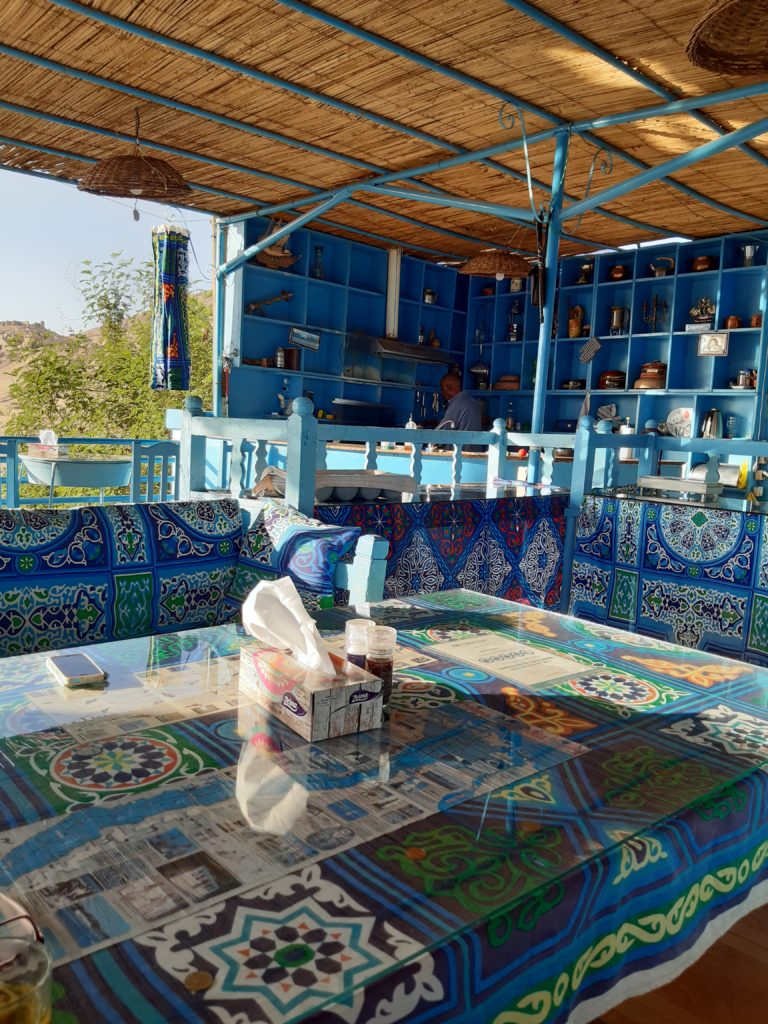
On the blue roof terrace
With a view of the cliff tombs of Qubbet el-Hawa, the Nile and a Nubian village in the background, we decided to do absolutely nothing this afternoon and simply take in the scenery. It felt like being on a tropical beach rather than in Egypt. After a short stroll and a delicious dinner cooked by Abdel we went to sleep in the spotlessly clean, blue room, with gekkos climbing up the shutters.
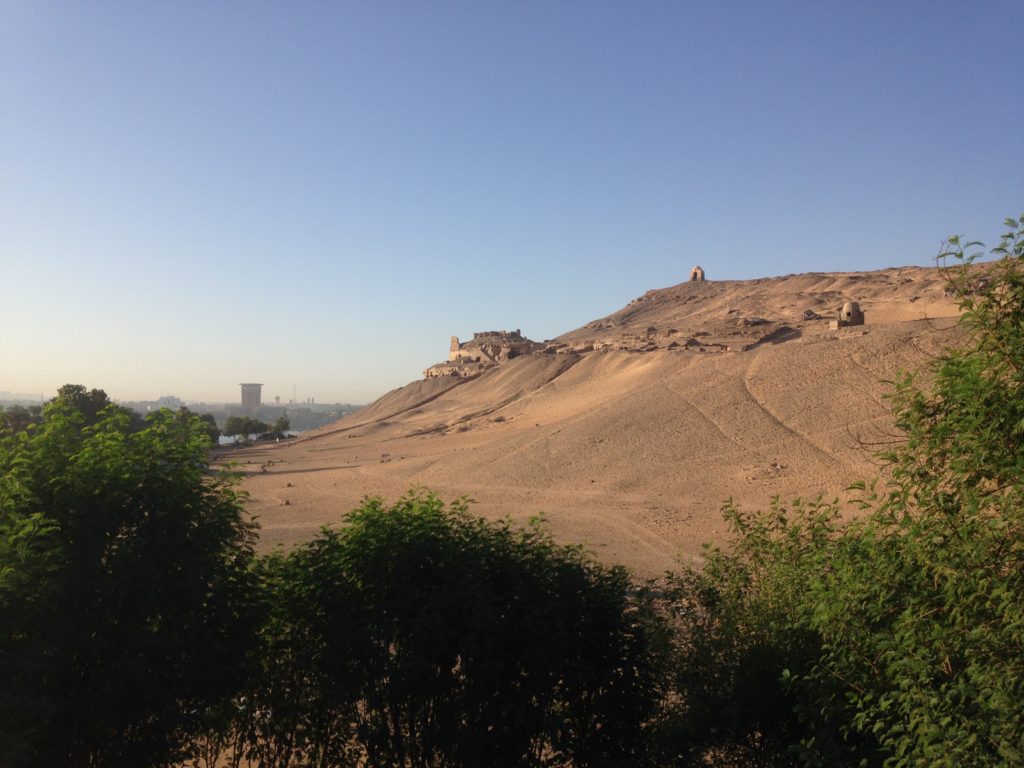
What better view than Qubbet el-Hawa
27 November
7.45 in the morning, and the sun is already burning. Sitting on the roof terrace, contemplating the fleetingness of life. Wondering whether you can feel at home anywhere in the world, or perhaps somewhere else more than in your home country. I’ve been rechristened as ‘Alex’ by Abdel, since ‘Nicky’ apparently means something indecent in Arabic. Here in Aswan I feel the urge to travel further south to Sudan, and an overpowering desire to remain free from jobs and relationships indefinitely and just to travel and write.
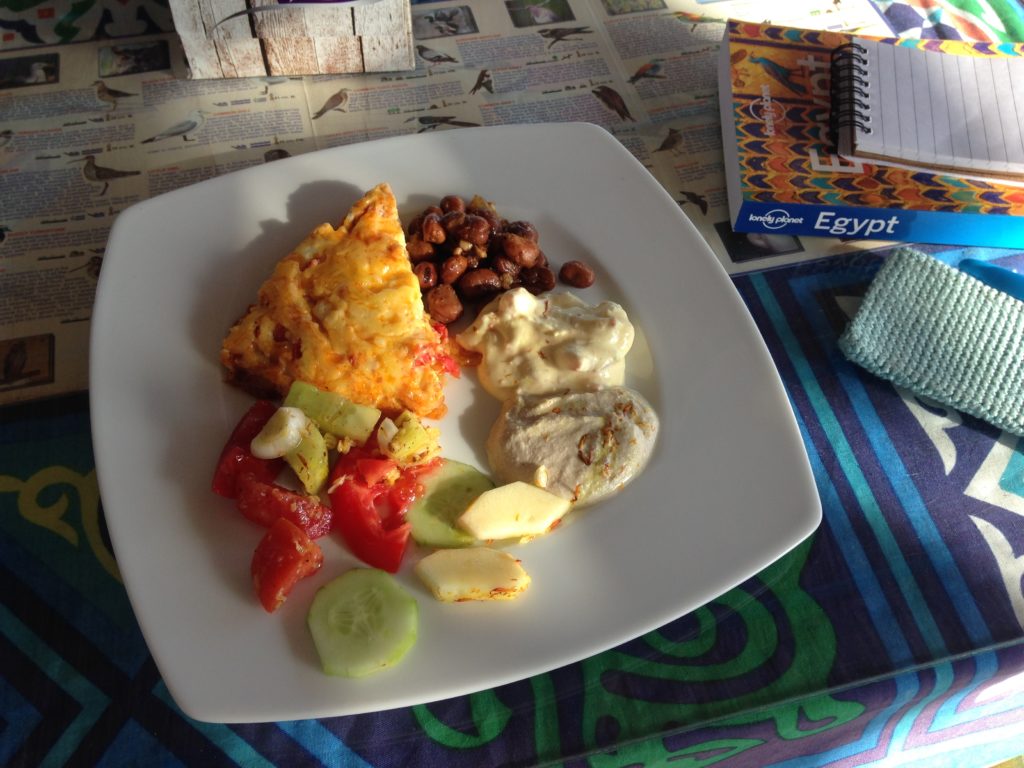
The best breakfast
We visited the tombs of the nobles at Qubbet el-Hawa, a short walk from the guesthouse followed by a long stairway up the cliffs. A gaffir with the key let us in all the tombs. That of Harkhuf, who explains in the autobiography carved on this tomb walls how he brought a dancing dwarf from the deep south to the young king Pepi. Sarenput II with its lovely colors and hieroglyph of an elephant. Mehu and Sabni with their great acoustics, making me want to sing (which I did, with the gaffir joining in). After having tea with the camel drivers and an attempt by Abdel to teach me some Nubian words we took a customary siesta.
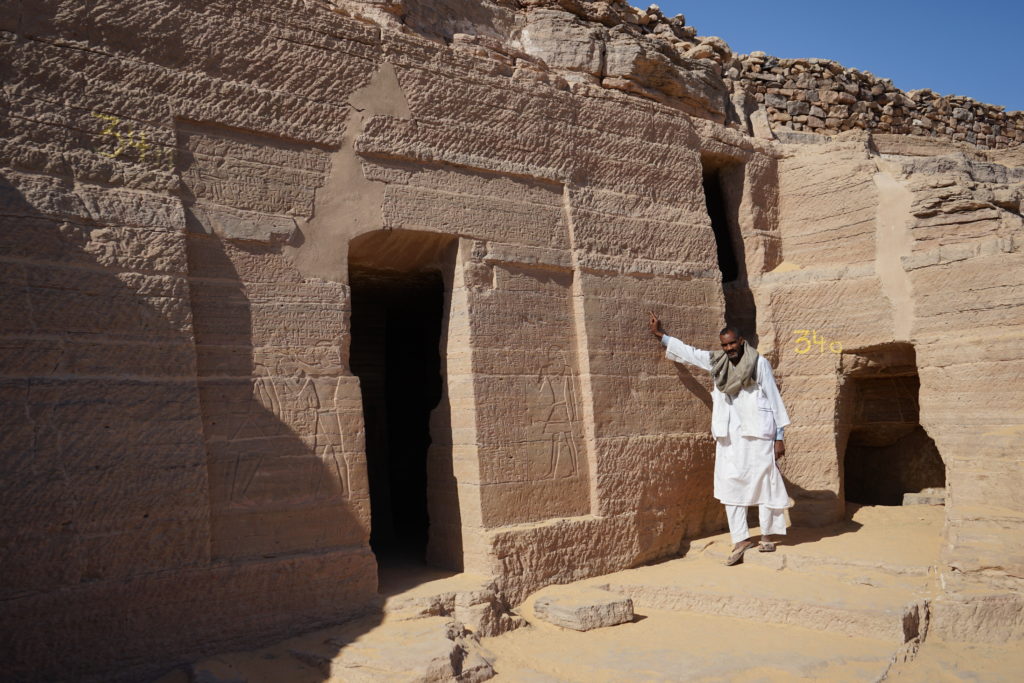
Harkhuf and his designated dwarf

In the tomb of Sarenput II
In the afternoon we chartered a sputtering motor boat to Kitchener’s Island, with its botanical garden containing many exotic trees. Besides us there were many Egyptian school children, all eager to try out their English, and surprised at being answered in Arabic. It was a lovely place to spend the slowly cooling afternoon.
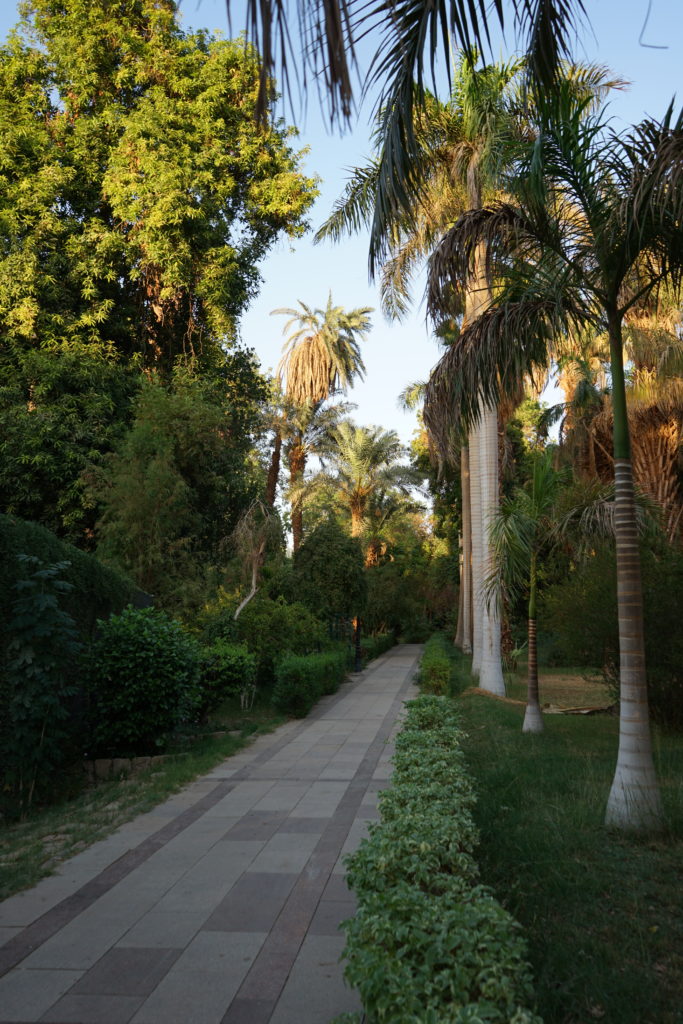
On Kitchener’s Island
At night, Abdel cooked fish for us and some other guests, a British couple and a Canadian lady. We decided to very decadently board a cruise boat the next day that would take us back to Luxor, rather than taking the train. We didn’t want our mini holiday to end just yet.
28 November
In the morning Abdel had promised us to take us on a boat trip up the Nile towards the first cataract. Like his guesthouse, he attempts to keep his gleaming white motor boat spotless, so no boarding with sandy shoes. The natural environment of Aswan is absolutely stunning, with its rapids, birds and sand hills rising up from the banks of the river. We ended up at the so called Nubian beach, where Abdel challenged me to take a swim in the Nile. I know, an Egyptian doctor already urged me to take a blood test, but it was heavenly.
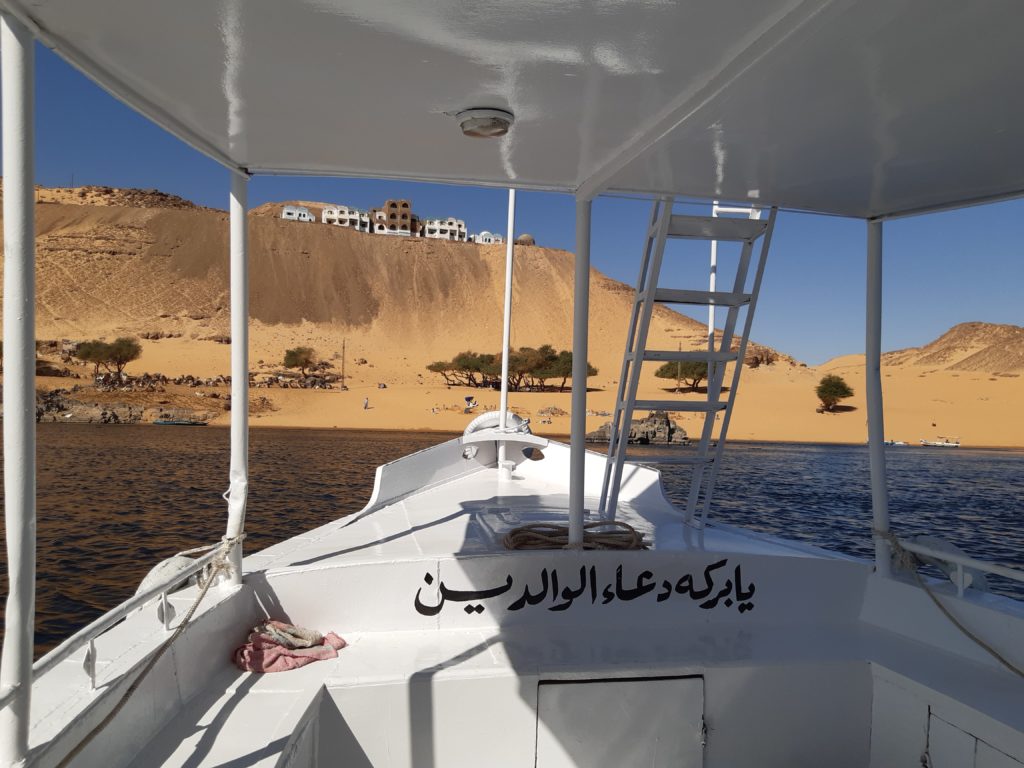
To the Nubian beach
After the trip, the motor boat took us to the cruise boat, which was a different world altogether. We got our slice of mass tourism, sharing the dining room, sun deck and temples en route with groups of Chinese, Brazilian and French tourists. Our table (getting stuffed with meals three times a day) was the opposite of the captain’s table, sharing it with other stowaways such as the British couple and a well traveled yet astonishingly naive American girl. It could have been the starting point of a vintage murder mystery.
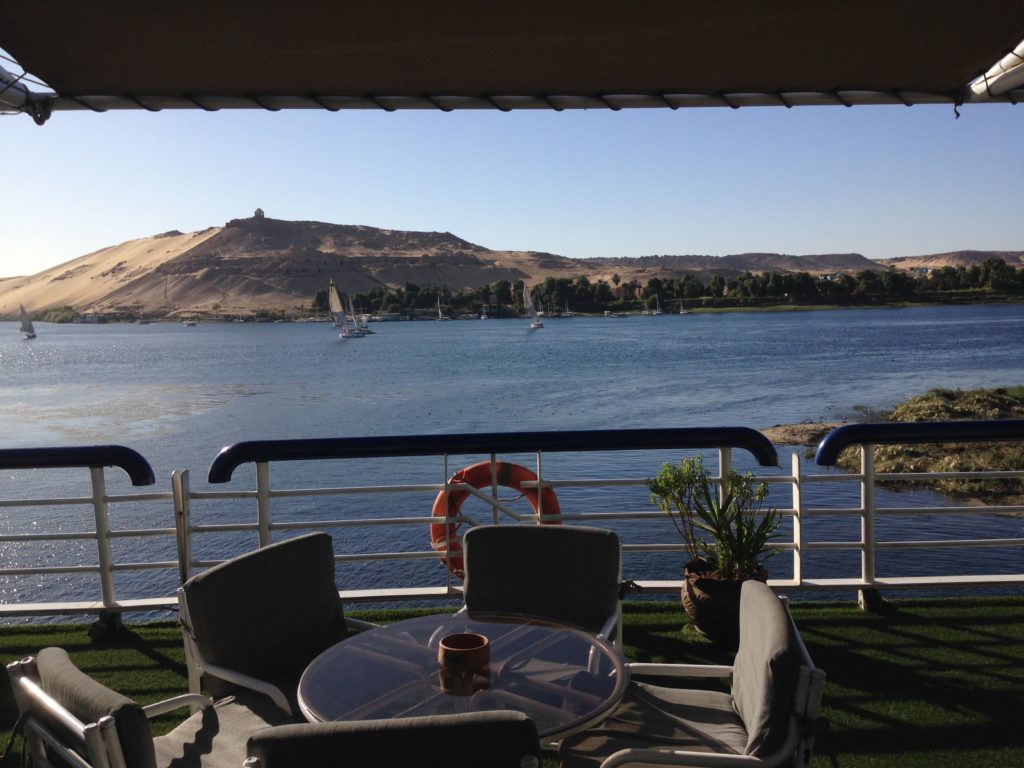
I could get used to this
After dinner (food, so much food, and multiple desserts) the boat docket at Kom Ombo, where we admired the Ptolemaic temple dedicated to Horus and Sobek by moonlight (and with a million other tourists). At 11 o’clock the stamping of the engines ceased and we fell asleep in our floating hotel.
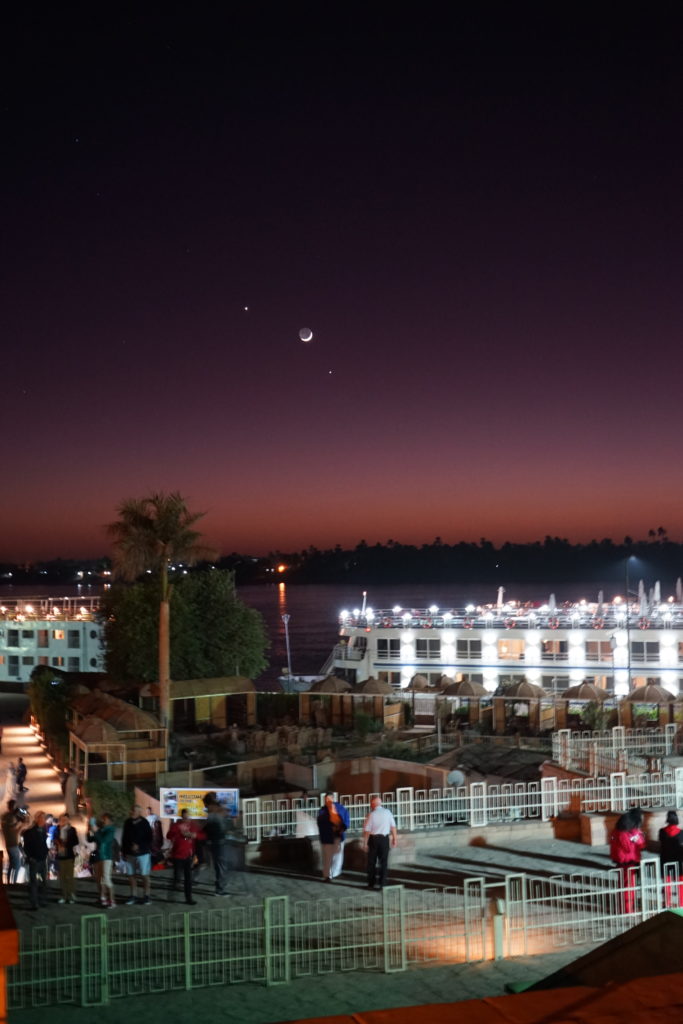
Mass tourism by night

The necessary ablutions
29 November
The wind is taking on strength as winter is on its way. After a very early morning of being rushed through Edfu (taking a taxi to overtake all the caleches), we enjoyed our day on deck. Endless water, palm trees and sky. Admittedly it is far more glamorous to glide up the Nile in an elegant dahabiya, dressing up in 20’s gowns for dinner, but that we will save for next time.

Early morning at Edfu
By midday we majestically sailed into Luxor, but we didn’t want our trip to end just yet. We strolled through the Winter Palace gardens with our British friends and had juice at Aboudi. On the boat there was the obligatory Oriental night with a sufi dancer and belly dancer. We slept one more night on the boat.
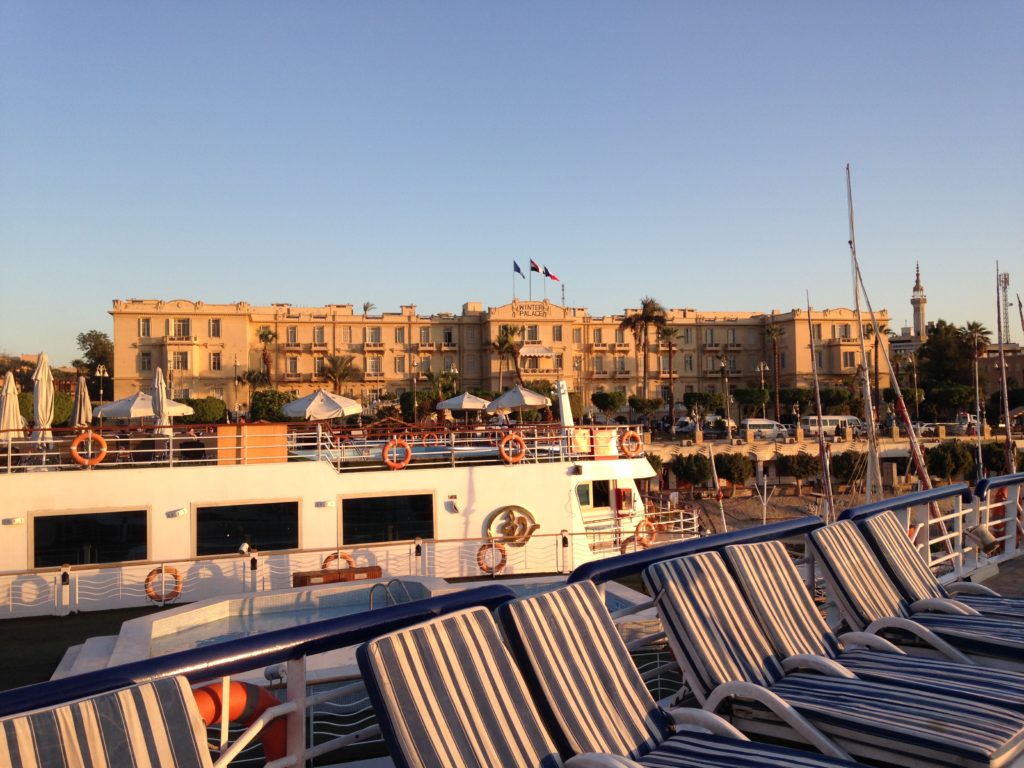
Winter Palace Hotel from the river
30 November – 8 December
On our way home we dropped off the British couple at the Nile Valley Hotel, where we met with a friend from Leiden. She was on a flying trip to Luxor, cramming as many monuments in her tight schedule as possible, which left us a bit baffled as we were now more than relaxed and well adapted to the slow pace of the south.
We did join her for a trip to Sheikh Abd el-Qurna and Khokha, where we extensively viewed and photographed a number of gorgeously painted elite tombs. Afterwards I found out that my professor had answered with commentary on my research proposal, so I spent a week working on improving it.
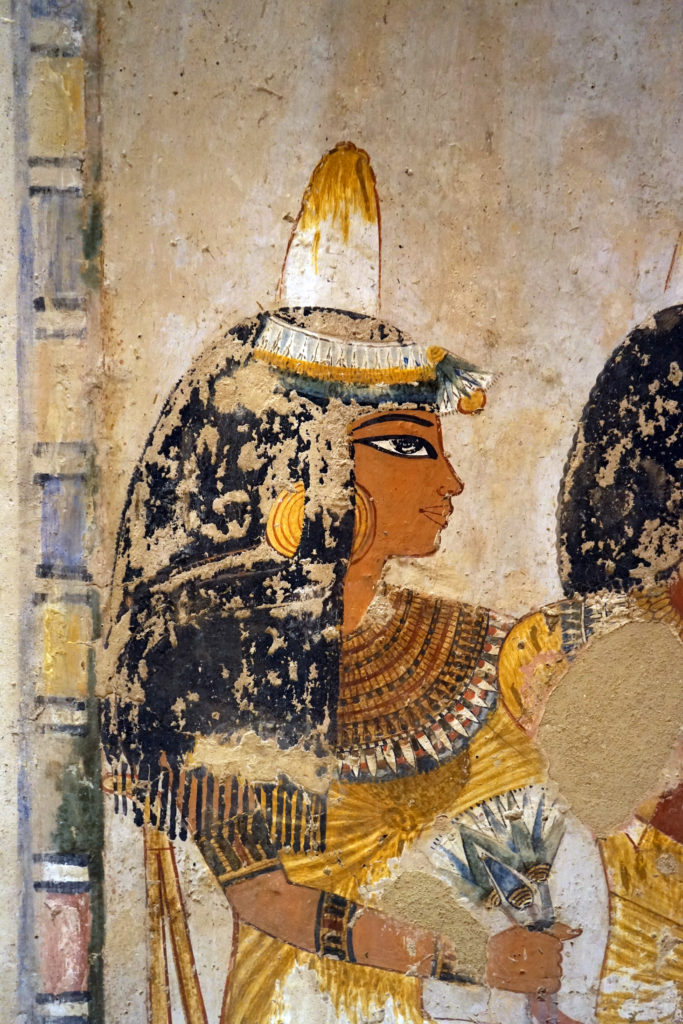
Henuttawy, the wife of Menna
We spent the rest of the time lazing, buying books and reading on the balcony. I could watch the mountains endlessly. We also celebrated ‘Sinterklaas’ with surprise gifts and poems.
9 December
After returning from a pleasant morning at Medinet Habu, my professor e-mailed with comments on my proposal, saying it is already much improved. Also, a Leiden archeology professor is offering me a job. Something with the position of the stars!
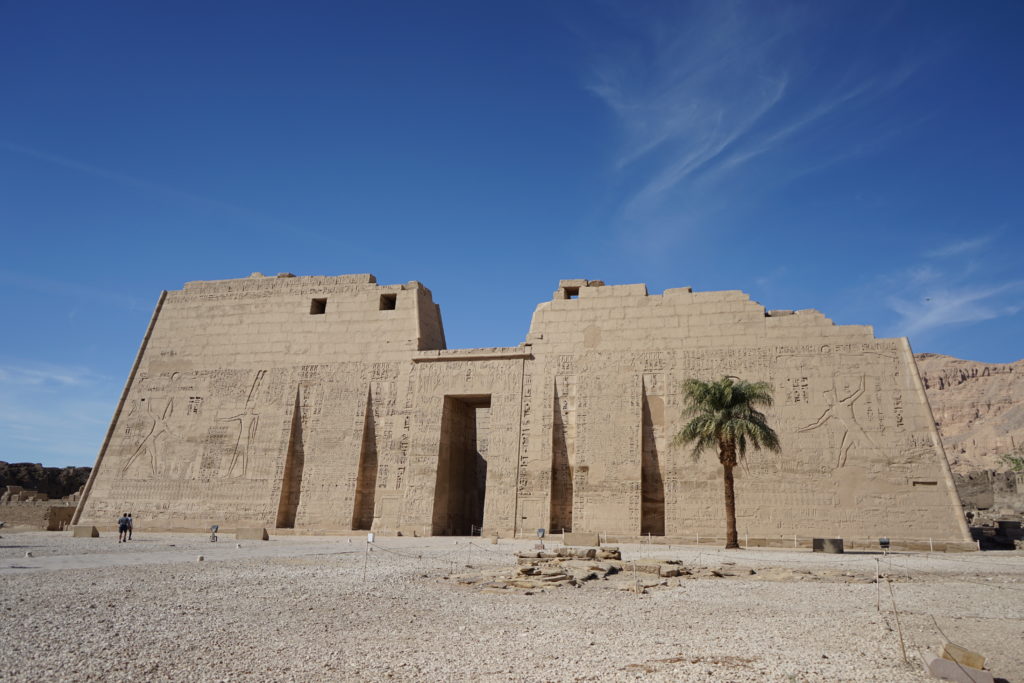
Medinet Habu
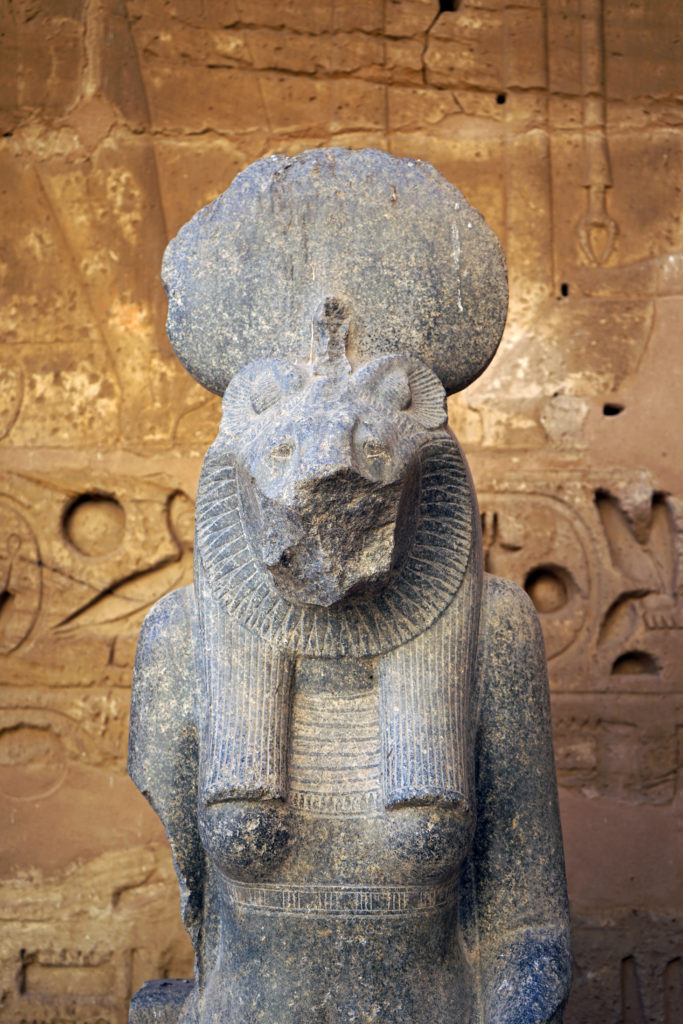
Statue of Sekhmet
12 December
We had a lovely day, visiting the tombs at Dra Abu el-Naga, including those of Raya (TT 159) and Niay (TT 286) that were recently opened. Then Ali took us on a tuktuk journey. First we went to Malqata, where the plan of the palace of Amenhotep III is still discernible in the desert sand. Then onwards to the small Ptolemaic temple of Isis at Deir el-Shewit, where we quietly sipped tea with the gaffir. When we offered him some pounds for the tea he gave us each a crust of the most deliciously fresh aish shams or sun bread I ever tasted. Finally Ali dropped us off at the Coptic monastery, where for the first time ever I could employ my Coptic skills in reading the names of all the saints. The day was concluded with a swim, a nice meal, yoga and profusely listening to Christmas songs.
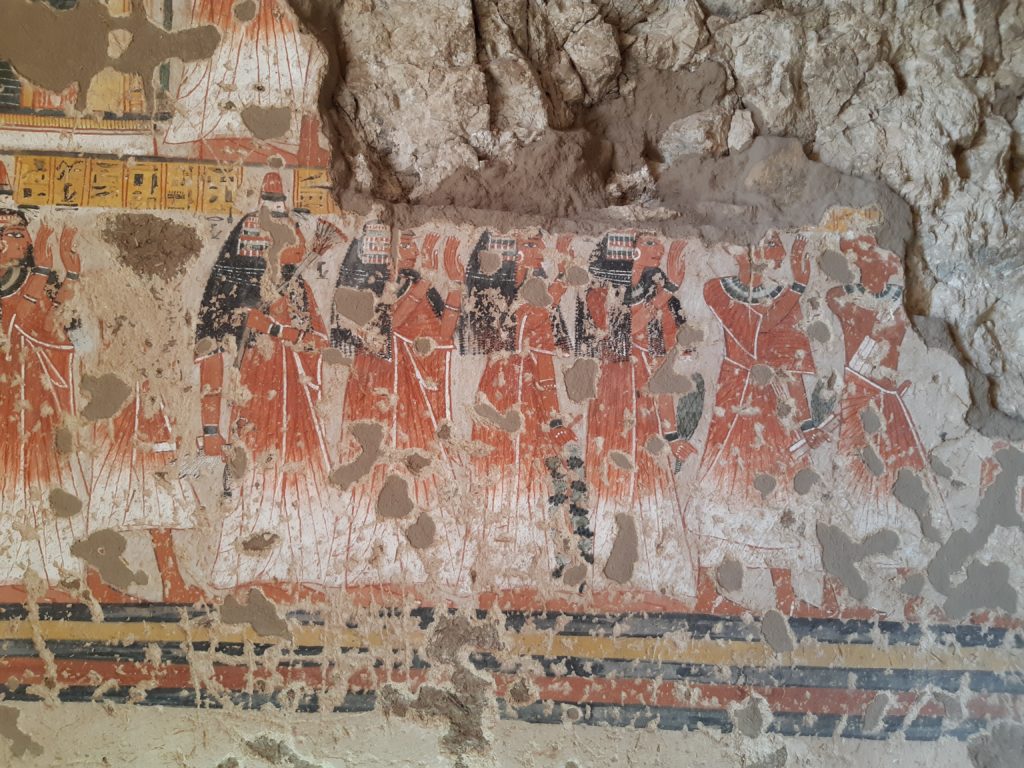
A funeral feast in the tomb of Niay (TT 286)
13 December
Friday 13th, my birthday, so it must be a lucky day. After drinking coffee with strawberry tarts from Atta’s Bakery, the owner’s daughter very kindly came to deliver another such pie, but larger. We’ll be eating the delicious stuff all day 🙂
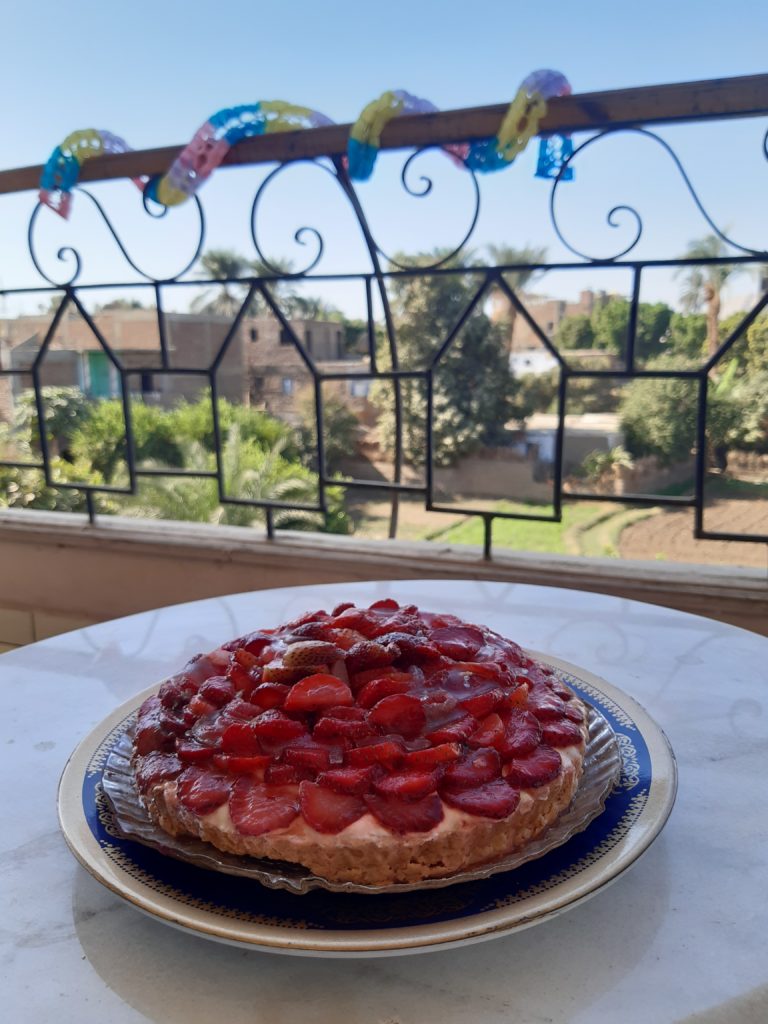
14 December
I came up with a book idea. It will be called Tea in the desert and will include a bunch of interesting characters that roamed around Luxor in the 19th and beginning of the 20th century. Lucy Duff Gordon, who lived on top of Luxor Temple. Mohammed Mohassib, the antiquities trader. The famous tomb robber’s family of Abd el-Rassul. Jan Herman Insinger, who traveled on his dahabiya and later built a ‘castle’ on the east bank. Elizabeth Thomas who worked in the Valley of the Kings. Howard Carter before he discovered the tomb of Tutankhamun.
And on that day in the Valley
I finally witnessed my goal
That all of us once will be buried and gone
Perish with body and soul
What remains after laughter and sorrow
Is but a bare-lying tomb
A pit struck in the wall of the ages
Full of darkness as once in the womb
Isis, Osiris, Ptah, Amun-Ra
A procession of gods we adore
Could not prevent the demise of one king
Or shield him from what lies in store
For all of their love and their sadness
Was looted and lost – fore’ermore
(In the King’s Valley / In het Koningsdal)
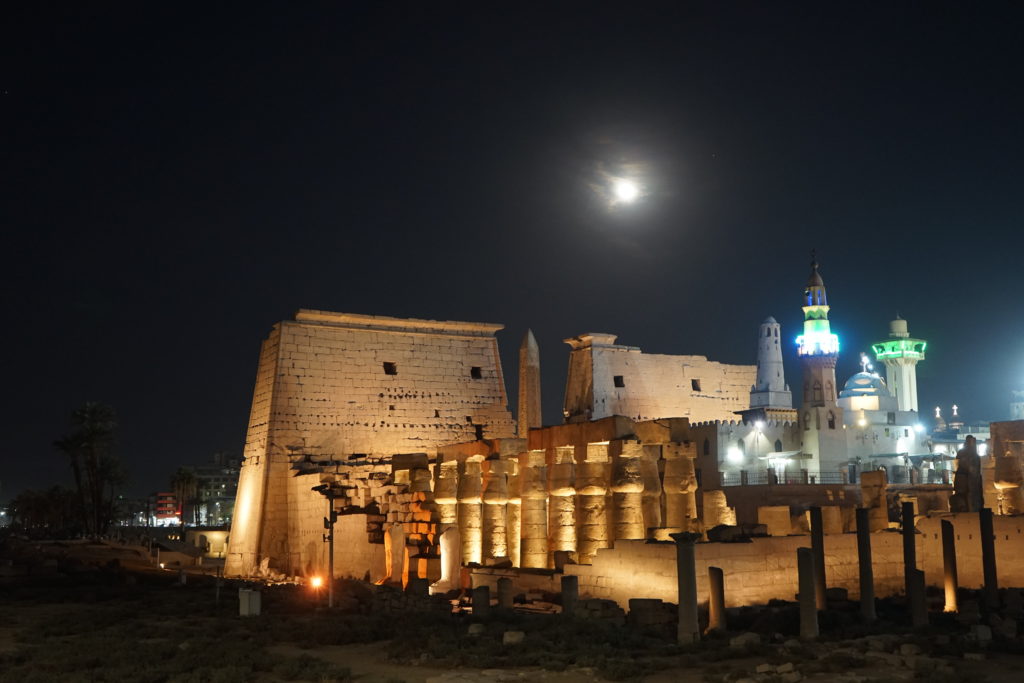
Luxor Temple and Abu Haggag Mosque
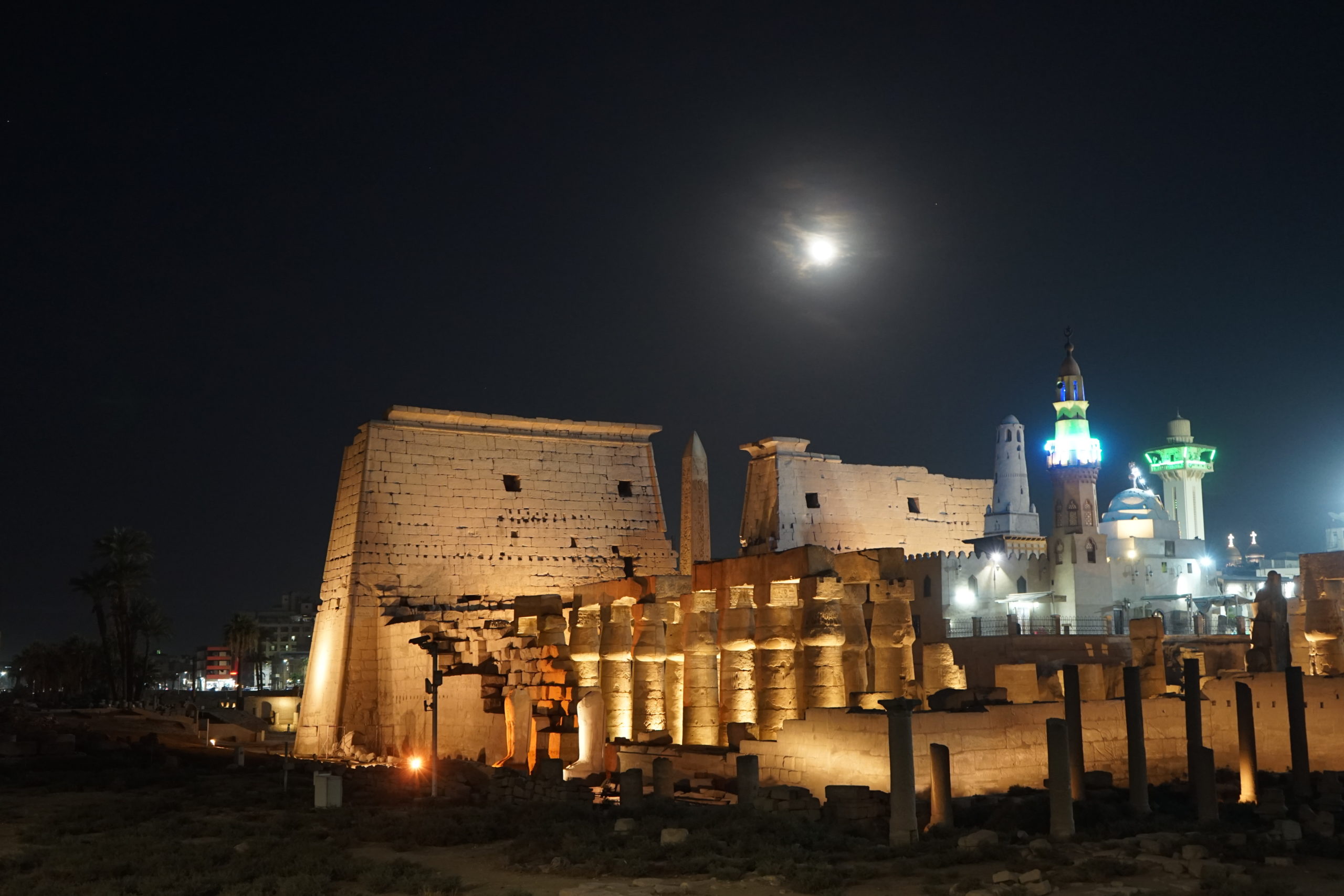
Heel leuk om te lezen! Tot ziens.